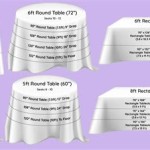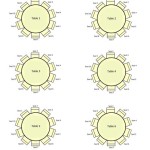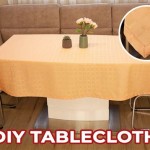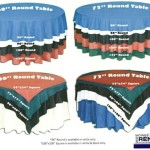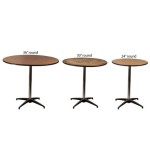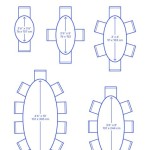The Multifaceted Purpose of Tablecloths
Tablecloths, often considered a simple decorative element, serve a multitude of purposes that extend far beyond mere aesthetics. From protecting valuable surfaces to enhancing the dining experience, tablecloths have played a significant role in various cultures and settings for centuries. Understanding their diverse functionalities is crucial for appreciating their continued relevance in modern households and establishments.
Protection of Table Surfaces
The primary function of a tablecloth is to protect the underlying table surface from damage. This protection encompasses several potential hazards. Scratches, caused by silverware, dishes, and other objects placed on the table, can gradually degrade the finish and appearance of the table. A tablecloth acts as a buffer, absorbing the impact and preventing direct contact between potentially abrasive items and the table’s surface.
Furthermore, tablecloths offer protection against spills, stains, and heat damage. Liquids, especially those containing acidic substances like wine or juice, can seep into the wood and leave permanent marks. A tablecloth acts as a barrier, absorbing the spill and preventing it from reaching the table. Similarly, hot dishes and cookware can scorch or warp the table's surface. A heat-resistant tablecloth provides a crucial layer of insulation, mitigating the risk of heat damage.
The cost of repairing or replacing a damaged table can be substantial. Investing in quality tablecloths represents a cost-effective measure to preserve the longevity and aesthetic appeal of dining tables, coffee tables, and other surfaces. The material of the tablecloth also plays a crucial role in its protective capabilities. Thicker, more durable fabrics offer greater resistance to damage than thinner, more delicate materials.
Beyond protecting against spills and heat, some tablecloths are designed with specialized coatings to enhance their protective qualities. These coatings may provide water resistance or stain resistance, making the tablecloth even more effective at safeguarding the table surface. Regularly cleaning and maintaining the tablecloth is also essential for preserving its protective properties. Removing spills promptly and washing the tablecloth according to the manufacturer's instructions will prevent stains from setting and ensure the tablecloth remains an effective barrier against potential damage.
Enhancement of the Dining Atmosphere
Tablecloths contribute significantly to the overall aesthetic of a dining area. They provide a foundation upon which to build a visually appealing tablescape, influencing the perceived formality and ambiance of the setting. A tablecloth can transform a mundane table into an elegant and inviting space, setting the tone for a memorable meal or gathering.
The color, texture, and pattern of a tablecloth can be carefully chosen to complement the surrounding decor and reflect the desired mood. A crisp white linen tablecloth conveys a sense of formality and sophistication, ideal for special occasions. A brightly colored or patterned tablecloth can inject vibrancy and personality into a more casual setting. The choice of fabric can also influence the atmosphere, with heavier fabrics like damask lending a sense of luxury and lighter fabrics like cotton creating a more relaxed feel.
Tablecloths can also be used to unify the overall design of a room. By coordinating the color and pattern of the tablecloth with other elements in the room, such as curtains, upholstery, or artwork, a cohesive and harmonious aesthetic can be achieved. This attention to detail can elevate the dining experience and create a more visually pleasing environment for guests.
Furthermore, tablecloths offer an opportunity to express personal style and creativity. They can be used as a canvas for showcasing decorative accents, such as runners, placemats, napkins, and centerpieces. The interplay of these elements can create a visually dynamic and engaging tablescape that reflects the host's individual taste and personality. The use of themed tablecloths can also enhance the atmosphere for special occasions, such as holidays, birthdays, or anniversaries.
Beyond visual appeal, tablecloths can also contribute to the sensory experience of dining. The feel of a soft, luxurious fabric against the skin can enhance comfort and create a more pleasurable experience. The sound of silverware and dishes resting on a tablecloth is often more muted and less jarring than the sound of these items hitting a bare table, contributing to a more relaxed and peaceful atmosphere.
Practical Functionality Beyond Aesthetics
While often associated with aesthetics and protection, tablecloths also serve several practical, often overlooked, functions. One such function is noise reduction. Hard surfaces like wood or glass tend to amplify sound, which can create a noisy and disruptive dining environment. A tablecloth, particularly one made of a thicker fabric, absorbs sound and reduces the reverberation of noise, fostering a more comfortable and conversational atmosphere.
Another practical benefit of using a tablecloth is its ability to conceal imperfections. Scratches, stains, or other blemishes on a table can detract from the overall appearance of the dining area. A tablecloth effectively covers these imperfections, creating a clean and polished look, even if the underlying table is not in pristine condition. This can be particularly useful in situations where the table is old, damaged, or simply not aesthetically pleasing.
Tablecloths can also provide a more comfortable and stable surface for dining. A bare table can be slippery, causing dishes and glassware to slide around. A tablecloth provides a non-slip surface, preventing accidents and ensuring that items remain securely in place. This is particularly important when serving hot or potentially messy dishes.
In some cultures, tablecloths serve a specific purpose related to etiquette and tradition. The act of laying a tablecloth can signify the beginning of a meal and the importance of the occasion. Different types of tablecloths may be used for different types of meals or events, reflecting the level of formality and significance. In some cultures, the tablecloth is considered a symbol of hospitality and generosity.
Moreover, tablecloths can be used to create a sense of continuity and cohesion in a dining area. By using the same tablecloths for multiple meals or events, a consistent and recognizable style can be established. This can be particularly useful in commercial settings, such as restaurants or hotels, where maintaining a consistent brand image is essential.
Finally, tablecloths can offer a degree of hygiene. While regular cleaning of the table surface is essential, a tablecloth provides an additional layer of protection against germs and bacteria. By regularly laundering the tablecloth, any potential contaminants can be removed, ensuring a cleaner and more hygienic dining environment. This is particularly important in situations where food is being prepared or served.

White And Blue Plain Commercial Purpose Table Cover At Rs 650 In Jaipur

Hotel Home Stay Decoration Multi Purpose Household Dining Table Cloth Cover Nordic Splicing Dutch Velvet Tablecloth China And Made In Com

Multi Purpose Cover Towel Round Table Cloth Household Cotton And Linen Tablecloth For Living Room Dining Wear Resistant 31 5 X Inch Com

Stone Created Disposable Table Cloth Printed Round Long Square Pure White Hotel Taiwan Foreign Trade Original China And Tablecloth Made In Com

Tablecloth Blue Purple Marble Circular Table Cloth Temu

Full Work Hollow Embroidery Table Flag Tea Cover Towel Multi Purpose Decorative Craft Cloth Joom

Round Table Cover Temu

Printed Table Cloth At Rs 290 Piece Round Cover In Jaipur Id 18255606591

Eiffel Tower Cotton Linen Tablecloth Multi Purpose Universal Coffee Table Dustproof Cover Size 100x140cm

Kate Aurora Luxe Living Raised Chenille All Purpose Fabric Tablecloth Target
Related Posts


